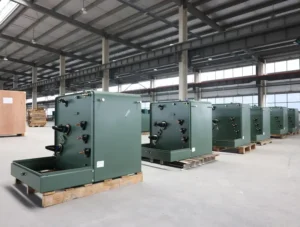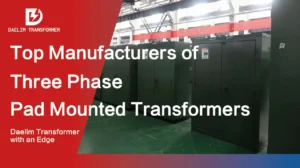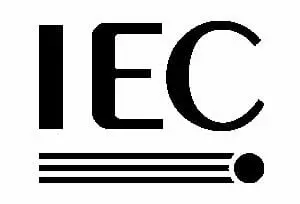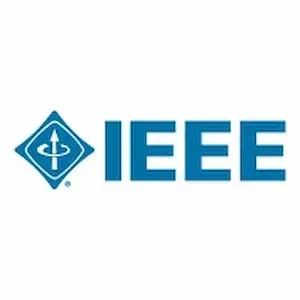One article to understanding more about earthing transformer
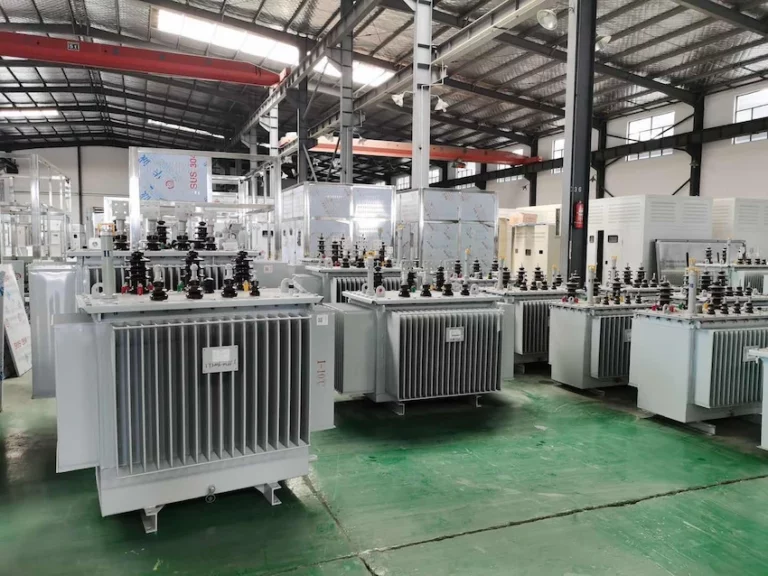
Earthing transformer is referred to as oil type and dry type, and can be divided into three-phase earthing transformer and single-phase earthing transformer.
The function of the earthing transformer is to provide an artificial neutral point for the system with the neutral point without grounding, easy to use the grounding mode of arc elimination coil or small resistance, so as to reduce the ground capacitor current of the distribution network when the grounding short circuit failure, and improve the power supply reliability of the distribution system.
Pad-mounted Transformer
Dry-type Transformer
Oil immersed transformer
Table of Content
Why are transformers earthed?
During the operation of the transformer, the iron core, fixed iron core, metal structure and winding components are all in a strong electric field environment.
With the electric field, they have a very high ground potential. If the core is not grounded, there is a potential difference between the ground clip and the fuel tank. In the presence of a potential difference, an intermittent discharge may occur.
Furthermore, there is a strong magnetic field around the winding.Iron core, metal structure, parts, parts, etc. Both in inhomogeneous magnetic fields, they are not located at equal distances from the winding.
Therefore, the size of the electromotive force caused by the magnetic field of the metal structures, components, and components is also different, and there is also a potential difference between them.
Although the potential difference is small, it can also break a small insulation gap, and thus may also lead to continuous tracking discharges.
Whether intermittent discharge phenomena are possible due to the effect of potential difference, or continuous tracking discharge phenomena due to small insulation gap breakdown, they are not allowed, and these intermittent discharge parts are difficult to check.
The effective solution is to reliably ground the core and the fixed core, the metal structure of the winding, and the parts, so that it is at the same grounding potential as the fuel tank.
The core of the transformer can be grounded, and one point can only be grounded.Since the silicon steel sheets of the core are insulated from each other, this is designed to prevent large vortices.
Therefore, all silicon steel sheets can not be grounded at multiple points, otherwise there will produce large vortex, the core is seriously heated.
The core of the transformer is grounded, usually through a silicon steel sheet of the core. Although the silicon steel sheet are insulated, the insulation resistance is small.
The uneven strong electric field and the strong magnetic field can allow the high voltage charge caused in the silicon steel sheet to flow through the ground to the surface, but it can prevent the eddy current.Streams from one whole to another.
Therefore, as long as any silicon steel sheet of the core is grounded, it is equivalent to the entire core grounding.
When the power transformer is in normal operation, the iron core must be grounded reliably at one point. Without grounding, the floating voltage to ground voltage causes intermittent breakdown firing of the core to ground.
After the core is grounded at one point, the possibility of forming the floating potential of the core is eliminated.
Let’s know learn more about the How to purchase a 10 mva substation transformer
Is earthing required in transformer?
If necessary, grounding the transformer can reduce the risk of one-phase grounding. If the neutral point is not grounded, when one phase touches the ground, the grounding current is not large, the equipment can still run, and the fault may exist for a long time.
If someone touches the leakage device, the current will return to the zero line through the human body through the device.
At this time, the human body is subjected to almost phase voltage, which is very dangerous. When the above fault occurs, all electrical equipment connected to zero in the grid is in a dangerous state.
At the same time, in the other two phases that do not touch the ground, the voltage to the ground also increases, which greatly increases the risk of electric shock.
Try for free information about the power transformer specification for tender in Canada
What type of earthing is used in transformer?
The grounding method of transformer neutral point is a specific embodiment of the grounding method of electric power system.
At present, there are three grounding methods, that is, the neutral point is not grounded, the neutral point is directly grounded, the neutral point through the arc extinguishing coil grounding.
The main advantage of an ungrounded neutral system is the high reliability of the power supply. When the single-phase grounding occurs in the system, if the three-phase voltage and current are balanced, there is no need to cut off the line, which reduces the number of power outages and improves the reliability of the power supply.
The main disadvantage is that the maximum long-term working voltage and overvoltage are high, especially the danger of arc grounding overvoltage, and the insulation level of the entire system is relatively high. In addition, it is difficult to achieve sensitive and selective ground protection.
The main advantage of a direct-earthed neutral system is the low level of overvoltage and insulation. From the perspective of relay protection, simple zero-sequence overcurrent protection can be used for high-current grounding systems, and the selectivity and sensitivity are easy to solve.
From an economic point of view, direct grounding of the neutral point is the least expensive method of grounding. But the disadvantage of this system is that all faults, especially the most likely single-phase ground fault, will cause the circuit breaker to trip, increasing the number of power outages.
In addition, excessive short-circuit current to ground can sometimes burn equipment and hinder the operation of communication systems.
The main advantages of grounding the neutral point through the arc suppression coil are:
1. When a single-phase ground fault occurs, due to the compensation effect of the arc suppression coil, the ground current at the fault point is reduced, and the arc can be automatically extinguished to ensure continued power supply;
2. Reduce the possibility of arc re-ignition at the fault point, and reduce the value of arc grounding overvoltage;
3. The value and duration of the grounding current at the fault point are reduced, thereby reducing the damage to the equipment;
4. Reduce the possibility of multi-phase short circuit caused by single-phase ground fault;
5. The disadvantage is that the system operation is more complicated, it is difficult to achieve selective grounding protection, and the cost is high.
Read my article on Know More About How power transformer be manufactured, tested & delivered?
How many earthing are there in transformer?
However, when the core is grounded above two points, the uneven potential between the core will form a circulating current between the receiving sites, resulting in a multi-point grounding heating failure of the core.
The grounding failure of the transformer core will cause the core to overheat locally.In severe cases, the local temperature rise of the iron core will increase, with light gas operation, and even trip due to heavy gas operation.
After smelting, part of the iron core forms a short circuit fault between the iron chips, which increases the loss of the iron chips and seriously affects the performance and normal operation of the transformer.
Therefore, the transformer does not allow multi-point grounding, only one point grounding. What is the scope of protection for gas protection? The scope includes:
1) Polyphase short circuit inside the transformer.
2) Short-circuit between turns, the winding is short-circuited with the iron core or the shell.
3) The iron core is faulty.
4) The oil will leak or leak under the oil level.
5) The tap changer is in poor contact or the wire is not welded firmly.
Read on POWER SUBSTATION IN GUAYAQUIL
What is the difference between the main variable differential and the role of gas protection?
1. Differential protection of the power transformer is designed and manufactured according to the principle of circulating current, and gas protection is designed and manufactured according to the characteristics of gas produced or decomposed when failure inside the transformer.
2. Differential protection is the main protection of the transformer, and gas protection is the main protection of the transformer internal faults.
3. Different protection range differential protection:
1) The main transformer wire and transformer coil have a multi-phase short circuit.
2) Single single phase interturn short circuit.
3) Protect the grounding fault of the coil and wire in the high current grounding system.
B gas protection: 1) Multi-phase short circuit inside the transformer.
2) Short circuit between turns, short circuit between turns and iron core or outside.
3) Iron core failure (heating and burning).
4) The oil will leak or leak under the oil level.
5) The tap changer is in poor contact or the wire is not welded properly
What are types of earthing?
Transformer grounding: divided into working grounding and protection grounding. Working grounding: Due to the requirements of the system at work, the necessary grounding is called working grounding.
Such as the grounding of the neutral line of the three-phase power supply, and the grounding of radio broadcasting equipment.
Protective ground: For safety reasons, the ground that is set falls into this category. Such as the grounding of the conductive metal shell of the electrical equipment. It is set to prevent dangerous voltages on the equipment shell when the equipment insulation is damaged.
Therefore, it is necessary to make a good equipotential connection between the conductive casing of the equipment and the earth. Once there is leakage, a large grounding current can be generated through the grounding wire, so that the protective electrical appliance can act, thereby avoiding harm to the human body.
Know more about One article to understanding more about earthing transformer
What is neutral earthing transformer?
Grounding transformer is referred to as grounding transformer. According to the filling medium, the grounding transformer can be divided into oil type and dry type, according to the phase number, the grounding transformer can be divided into three-phase ground transformer and single-phase ground transformer.
The function of the grounding transformer is to provide the artificial neutral point for the system with the neutral point without grounding, and facilitate the grounding method of arc extinguishing coil or small resistance, so as to reduce the capacitor current of the distribution network when the grounding short circuit failure occurs, and improve the reliability of the distribution system.

